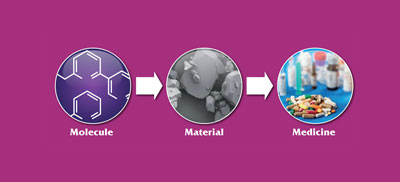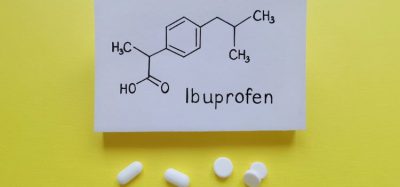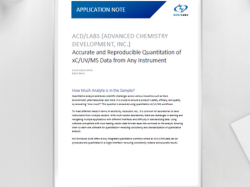The SSPC: leading the way for next-generation medicines manufacture
Posted: 3 September 2015 |
The Synthesis and Solid State Pharmaceutical Centre (SSPC), a global hub of pharmaceutical process innovation and advanced manufacturing, is funded by Science Foundation Ireland (SFI) and Industry, and represents a unique collaboration between 22 industry partners, nine research performing organisations and 12 international academic collaborators. It is a €42 million state-industry investment, which supports a globallyleading research team of 38 investigators, 34 post-doctoral researchers and 60 PhD candidates.


As the largest research collaboration in Ireland and one of the largest globally within the pharmaceutical area, the SSPC transcends company and academic boundaries. Its role is to link experienced scientists and engineers in academia and the pharmaceutical industry, to address critical research challenges and to deliver industry-relevant solutions, which result in job growth and retention within the pharmaceutical industry.
From molecule to medicine
The SSPC leads the way for next-generation medicines manufacture. Its research programme spans the entire pharmaceutical production chain from synthesis of the molecule to the isolation of the material and the formulation of the medicine. The SSPC’s globally-leading research programme is organised into three interconnecting strands (Molecule, Material, Medicine), which actively reflect the three distinct steps in the manufacture of modern medicines. The Centre supports 19 research projects across these three strands of research, which are divided into nine platform projects that aim to progress scientific state-of-the-art research, driven by scientific challenges of the area; eight targeted projects that are driven by scientific challenges of specific industrial needs; and two linker projects that are the interactions between the strands, which concentrate effort at interfaces where the most important developments need to take place. In addition to these 19 research projects, the SSPC has recently expanded its remit into the biopharmaceutical arena, through a new state-industry funded collaborative project, which will conduct cutting edge research in the area of extractable and leachable compounds.
Strand 1 – New frontiers in pharmaceutical synthesis (Molecule)
SSPC’s strand 1 research programme centres on developing better and more environmentally sustainable ways to make active pharmaceutical ingredients (APIs), by seeking to exploit the potential of biocatalysis in key synthetic transformations, utilising enzymes with improved stability, selectivity and reusability. SSPC investigators conduct unique research in areas such as:
- The development of new catalytic approaches, encompassing the discovery of novel biocatalysts via metagenomic analysis and random mutagenesis of recombinant enzymes.
- The exploitation of new synthetic methods for amides and esters, expanding this methodology to the synthesis of key APIs.
- The development of new methodologies to shorten enantioselective synthetic routes to existing APIs and future drug candidates.
- The use of flow technology and reaction telescoping of processes involving hazardous intermediates and incompatible conditions.
Strand 2 – Crystal growth and design (Material)
SSPC’s strand 2 research programme focuses on developing optimal ways to crystallise APIs by developing crystallisation methods for controlling the size of product crystals, to directly meet the requirements of secondary manufacturing and drug performance. SSPC investigators conduct next-generation research in areas such as:
- The development of a more precise treatment of thermodynamic and kinetic data, and the development of models for crystallisations.
- The use of process design, modelling and control in order to develop new strategies from modelling for control of nucleation, growth, agglomeration and breakage, to deliver more reliable and predictable processes.
- The experimental investigation of impurity effects in crystallisation, along with molecular modelling studies focussing on parameters, which impact nucleation, growth and impurity incorporation.
- The investigation of a range of co-crystals and the examination of the mechanism of heterogeneous nucleation and crystallisation (or precipitation) of APIs into and onto excipient particles or pre-manufactured granules.
Strand 3 – Drug product formulation and manufacture (Medicine)
SSPC’s strand 3 research centres on developing the dosage forms of the future, with particular focus on the generation and stabilisation of amorphous APIs in order to increase the fundamental understanding of the amorphous solid state and its stabilisation for new composite pharmaceutical materials. SSPC investigators conduct cutting-edge research in areas such as:
- The tracking of amorphous crystalline API, API/excipient and API/excipient/moisture interactions through a range of formulation processes.
- The identification and control of critical API characteristics and how such characteristics, in turn, impact on processability in drug product manufacture and drug product performance.
- The investigation of critical excipient characteristics, with an emphasis on understanding variability in composition, how this variability impacts on performance in formulation, and on developing a range of potential additional testing for a select range of excipients used in drug formulations.
- The development of novel technologies for the delivery of solid dispersions of BCS Class II drugs, so as to manipulate the performance of low solubility drugs in a predictive space via a Quality by Design (QbD) approach.
- The development of control strategies to deliver tuneable processes for API manufacturing, which are capable of producing specific API characteristics across a range of manufacturing scales, facilitating more robust and predictable design and optimisation.
SSPC API/excipient case studies
Case study 1: An industrial−academic partnership to optimise small molecule process development
One of the most successful of a range of projects carried out by a collaborative partnership between a synthetic chemistry research team led by Maguire and co-workers, University College Cork and Eli Lilly and Company, involved a telescoped approach to aryl hydroxymethylation employed in the synthesis of a key pharmaceutical intermediate using a rational, mechanistic-based approach, which has been successfully implemented by Lilly to produce in excess of 300kg of compound 1 for commercial validation of edivoxetine·HCl (Scheme 1; page 00).
The collaborative research enabled telescoping of two synthetic steps – a Bouveault formylation and hydride reduction – into a single efficient process, which is readily amenable to large-scale manufacture (Scheme 1; page 00). This novel approach replaces highly hazardous chloromethylation chemistry that produces bischloromethyl ether as a byproduct, which is dangerous on all scales of operation. Telescoping of synthetic steps is particularly attractive to the pharmaceutical industry since this approach affords significant process safety advantages and reduces the overall process mass intensity. It is anticipated that this methodology could be readily extended for the synthesis of other useful pharmaceutical, fine chemical and agricultural product intermediates, where other hydroxymethylation processes are currently in operation1.
Case study 2: a stereoselective switch/enantiodivergent approach to the synthesis of isoflavanones
Guiry’s research group at the University College Dublin has developed the first catalytic asymmetric synthesis of isoflavanones, an important class of natural products, with potential anti-cancer and anti-microbial therapeutic capabilities. This work includes a highly enantioselective synthesis of isoflavanones of type 3 in excellent enantioselectivities from 76-97% (Scheme 2; page 00).
A switch in the sense of stereoinduction was observed with substrate 2 when different H+ sources were employed as formic acid afforded the enantiomeric product to that obtained using Meldrum’s acid, showing the first example of dual stereocontrol in an asymmetric protonation reaction2.
Case study 3: the role of solvent–solute interaction in crystal nucleation
Rasmuson and co-workers at the University of Limerick are examining the role of solvents in crystallisations with a special emphasis on examining nucleation in pharmaceutical compounds (Figure 4; page 00). APIs examined in this way include risperidone, fenofibrate, tolbutamide, fenoxycarb, danthron and salicylic acid (SA). For example, crystal nucleation of SA in different solvents becomes increasingly more difficult in the order: chloroform, ethyl acetate, acetonitrile, acetone, methanol and acetic acid. Vibration spectroscopy, calorimetric measurements and density functional theory (DFT) calculations were used to reveal the underlying molecular mechanisms suggesting that SA exists predominately as dimers in chloroform, but in the other five solvents there is no clear evidence of dimerisation. An excellent insight into the role of the solvent in nucleation is provided by DFT calculated energy of binding the complete first solvation shell to the SA molecule. The different methods quantitatively reveal a consistent picture whereby the stronger the solvent binds to the API molecule in solution, the slower the nucleation becomes3.
Case study 4: automated self-seeding of crystallisations
Control of the final particle size from a crystallisation operation can be highly dependent on the size of the initial seed particles used to initiate and control the crystal growth. A challenge is to generate seed of a specific size to deliver the required product specification, without recourse to additional costly size reduction operations. Glennon and co-workers, University College Dublin, demonstrated the use of a continuous crystallisation device to automatically generate seed crystals in situ. The size and amount of seed particles generated can be precisely controlled by varying the conditions and duration of operation of the device, which is a high-intensity Roughton vortex mixer. In the mixer, a portion of the batch is contacted with an anti-solvent under controlled mixing and flow conditions in steady state, until a sufficient seed bed has been generated. The batch process can then proceed to completion to deliver the required product4.
Case study 5: PAT in solid oral dose manufacture
To assess the utility of a range of process analytical technology (PAT) tools for solid oral dose manufacture, a collaborative study was undertaken between SSPC academic groups led by Crean from University College Cork, and Walker, of the University of Limerick, in collaboration with SSPC industry partner Innopharma Labs in Dublin. The study applied a combination of novel in-line and off-line PAT tools and laboratory-based techniques to monitor a roller compaction granulation process. Ribbon percentage solid fraction was determined using a GeoPyc® envelope and Accupyc® true density analysers.
The percentage solid fraction measurements correlated with in-line NIR spectroscopy measurements for the Multieye® PAT tool, from Innopharma Labs. Granule particle size analysis was performed by traditional sieve analysis and two PAT tools; the Eyecon® (Innopharma Labs) and the Camsizer® (Retsch) off-line. Granule compressibility was determined using in-die Heckle analysis. Compacts analysed using off-line Raman spectroscopy showed that surface smoothness correlated with crushing strength. The study demonstrated a good relationship between in-line and off-line PAT measurement of key in-process material attributes. The findings support the exploitation of these new in-line PAT methods in monitoring and controlling continuous solid oral dosage form unit operations5.
Case study 6: solution-mediated polymorphic transformations
Hodnett and co-workers, from the University of Limerick, have studied the solution-mediated transformation of the metastable polymorphs of the drugs carbamazepine, piracetam, l-glutamic acid and sulphathiazole. A common feature of these transformations is that the stable form nucleates on the surface of the metastable form; as the stable form grows, the metastable dissolves roughening in the process whereas the growing stable crystal present smooth facets and clearly defined inter-facet angles (Figure 4; page 00).
The nature of the surface interactions between polymorphs are mostly unclear, but there are rare striking demonstrations of epitaxy between form as such as FII and FIV in sulphathiazole (Figure 5; page 00).
This transformation can occur on timescales ranging from seconds to years. A general trend was observed; the higher the solubility generated through choice of solvent or temperature, the faster the transformation to the stable form. From a practical perspective, pure metastable forms could be isolated from solvents in which the APIs were poorly soluble whereas the stable forms are readily isolated from solvents in which the APIs are readily soluble.
Conclusion
Trust, a culture of inclusivity and equity, clear goals and objectives, commitment and mutual benefit are just some of the factors that the SSPC fosters within its successful industry-academia and inter-industry collaborations. These successful collaborations enable the SSPC to conduct globally-leading research, which leads the way for next generation medicines manufacture. The SSPC is continually seeking to develop new national and international academic and industry collaborations. To find out more about the SSPC please go to www.sspc.ie.
References
- Deasy, RE, Slattery, CN, Kissane, M, McNamara, OA, Lynch, D, Maguire, AR. Leveraging an Industrial−Academic Partnership To Optimize Small Molecule Process Development within the Pharmaceutical Industry. 2015; Organic Process Research and Development
- Doran, R, Carroll, MP, Akula, R, Hogan, BF, Martins, M, Fanning, S, Guiry, PJ. A Stereoselective Switch: Enantiodivergent Approach to the Synthesis of Isoflavanones. 2014; Chemistry – A European Journal
- Khamar, D., Zeglinski, J., Mealey, D., and Rasmuson, Investigating the Role of Solvent–Solute Interaction in Crystal Nucleation. A.C. Journal of the American Chemical Society; 2014
- Ferguson, S, Morris, G, Hao, H, Barrett, M, and Glennon, B. Automated Self Seeding of Batch Crystallizations via Plug Flow Seed Generation. 2014; Chemical Engineering Research and Design
- McAuliffe, MAP, O’Mahony, GE, Blackshields, CA, Collins, JA, Egan, DP, Kiernan, L, O’Neill, E, Lenihan, S, Walker, GM, Crean AM. The Use of PAT and Off-line Methods for Monitoring of Roller Compacted Ribbon and Granule Properties with a View to Continuous Processing. 2014; Organic Process Research & Development
- Maher, A, Croker, DM, Seaton, CC, Rasmuson, AC, Hodnett, BK. Solution-Mediated Polymorphic Transformation: Form II to Form III Piracetam in Organic Solvents. ; 2014; Crystal Growth and Design
- Munroe, A, Croker, D, Hodnett, BK Seaton, CC. Epitaxial growth of polymorphic systems: The case of sulfathiazole. 2011; CrystEngCom
Biographies
Professor Benjamin K. Hodnett, SSPC’s Scientific Director, is the former Dean of the Faculty of Science and Engineering (2007-2013), having previously served as Head of the Department of Chemical and Environmental Sciences (1995-1998), and Director of the Materials and Surface Science Institute (1999-2003) at the University of Limerick. Prof. Hodnett played a lead role in the Aughinish Alumina-UL five year research collaboration, which provided the foundations for the Solid State Pharmaceutical Cluster (2007-2013). Prof. Hodnett’s research interests centre on polymorphism in pharmaceutical compounds and active pharmaceutical crystallisation into excipient matrices. Prof. Hodnett has published over 120 papers in refereed journals, which have over 2,800 ISI citations.
Professor Anita R. Maguire, SSPC Principal Investigator, is Vice President for Research and Innovation at University College Cork (UCC). Prof. Maguire has previously served as Head of the Department of Chemistry (2005-2007) and Head of the School of Pharmacy (2009-10) at UCC. Over the past 23 years at UCC, Prof. Maguire has led an active research team focusing on synthetic organic and pharmaceutical chemistry, which interacts extensively with the pharmaceutical sector in Ireland and internationally. Prof. Maguire is committed to postgraduate education, ensuring the research students gain the skills required to underpin their future careers. Since 1997, 37 PhD students have graduated from Prof. Maguire’s research team, most of whom have developed careers within the pharmaceutical industry.
Professor Pat. J. Guiry, SSPC Principal Investigator, is Professor of Synthetic Organic Chemistry at University College Dublin (UCD), and holds a PhD and a BSc (Hons) in Chemistry from UCD. In 2013, Prof. Guiry was elected as a Member of the Royal Irish Academy and in 2014 he was appointed Royal Irish Academy Vice-Chair, Physical, Chemical and Mathematical Sciences, and was awarded the Boyle-Higgins Medal by the Institute of Chemistry of Ireland. Prof. Guiry’s research specialises in synthetic organic chemistry, with interests in both the development of asymmetric synthetic methodology through the application of new chiral ligands in homogeneous metal-catalysed transformations, and in the total synthesis of compounds of biological interest.
Professor Ake C. Rasmuson, SSPC Principal Investigator, University of Limerick (UL), is Professor of Chemical Engineering and Industrial Chemistry, holds a MSc and a PhD in Chemical Engineering from the Royal Institute of Technology (KTH) in Stockholm, Sweden. Prof. Rasmuson received a chair at KTH before joining UL in 2008. Prof. Rasmuson’s main field of research focuses on various aspects of crystallisation and crystallisation processes including: fundamentals of solubility, nucleation, growth and agglomeration; experimental determination of solution thermodynamics and crystallisation kinetics; crystallisation of organic molecules from solution; influence of hydrodynamics and mixing in crystallisation processes and batch crystallisation process design.
Professor Brian Glennon, SSPC Principal Investigator, is a Professor of Chemical and Bioprocess Engineering in University College Dublin (UCD), and is the Director of the Pharmaceutical Process Engineering Research Group, UCD. Prof. Glennon’s research interests focus on the development and application of measurement, modelling and control strategies for the design and optimisation of pharmaceutical processes. Prof. Glennon is co-founder of APC Ltd, a process engineering technologies and solutions company which works with the majority of the world’s leading pharmaceutical and biopharmaceutical companies.
Dr Abina M. Crean, SSPC Principal Investigator, graduated with a degree in Pharmacy from Robert Gordon’s University, Aberdeen, Scotland in 1992, and in 1997 she completed a PhD in Pharmaceutics in the School of Pharmacy and Pharmaceutical Sciences, Trinity College Dublin. Since joining the newly-established School of Pharmacy in University College Cork (UCC), Dr Crean has been actively involved in the development of the new research facilities and curriculum. Dr Crean has established a pharmaceutical technology research group in UCC and has supervised a range research projects in the areas of pharmaceutical manufacturing and formulation science. Dr Crean’s research interests focus on the development of medicines through understanding the behaviour of constituent materials.









